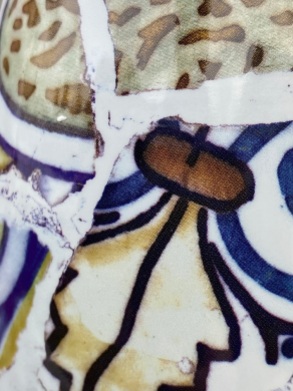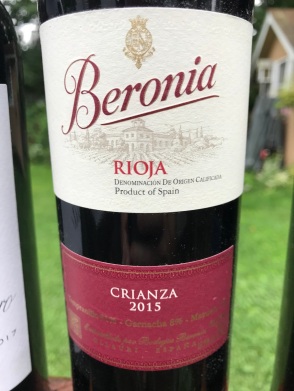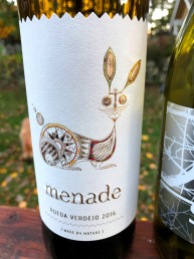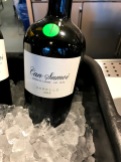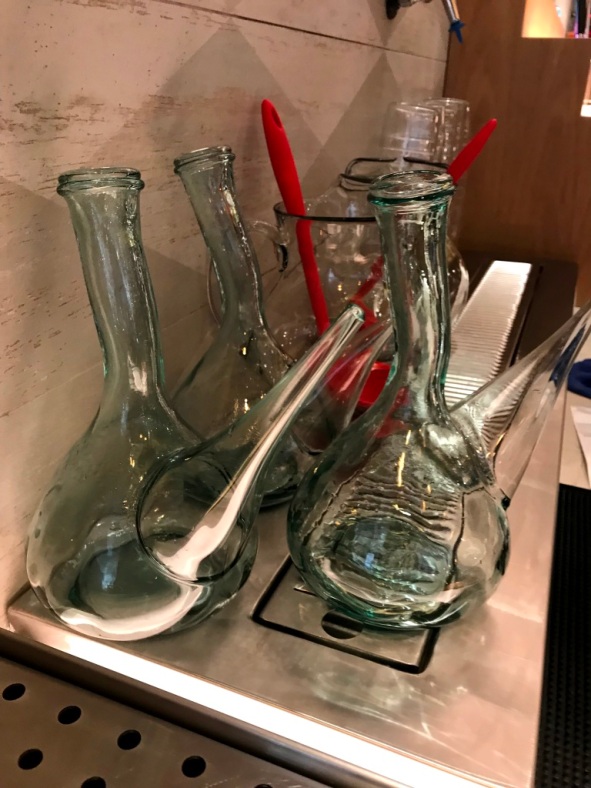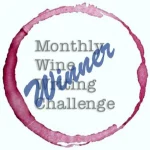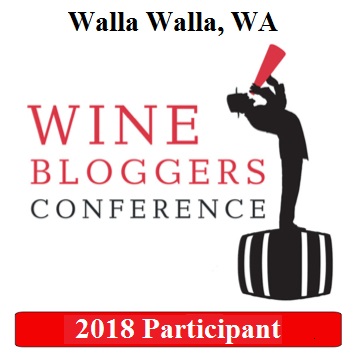Archive
When in Spain…
My last trip to Europe was in September 2019. Next were the 3 strange years (you know what I’m talking about). And then suddenly I had to come to Europe for work meetings for 2 straight weeks – first week in Spain, then in France. It honestly felt very strange, visiting Europe after such a long break, but I’m afraid I will start sounding very stupid if I will continue complaining…
Before we talk about Spain – I love sunsets and sunrises around the planes – I’m sure you know that there will be quite a few pictures in this post, so here you go…
So what one does do upon arrival to Spain? Okay, I have no idea what people actually do when they come to Spain. And my course of action is largely independent of the destination – I need to find sparkling water for my hotel room, as this is the form of water I always prefer. And of course, being in Europe, I need to check the prices of wine and probably get a bottle or two for the room.
Arriving in Malaga on Sunday didn’t really help with things. Why? I don’t know if this is very typical of Spain (I suspect so) or just for Malaga, but no matter what Google says the absolute majority of the supermarkets are closed (as well as most of the regular stores). I made 2-3 attempts to rely on Google’s recommendations only to find places closed. I almost gave up but decided to give it one more try. This walk was successful, and I ended up with 3 bottles of wine, 3 bottles of seltzer, and some other provisions to make hotel room life more fun (glad I had a little fridge in the room).
Of course, the point of the excursion was not just to get the wine, but also to see the prices and selection. A good number of wines were priced in the range which doesn’t exist in the USA, no matter what and where you are buying – from €2.50 to €4. You can also see a variety of “Tetrapak” wine options, priced extremely reasonably, barely a €1 for a liter and similar prices for the six-packs. Definitely beats “wine-in-the-can” prices in the US which can easily exceed an obnoxious $10 for a can and more.
Later in the week I managed to get to a supermarket, so you can see the price observation in the pictures below. It is interesting the Albariño wines were priced almost at the level of the prices in the US – while many of the wines were available for a “buck fifty” or so. Go figure…
Anyway, I settled for two bottles of red and one white, each under €4.
After getting back to my room, I happily enjoyed both of the reds, which both happened to be Tempranillo wines. I did like 2017 Félix Solís Winery Viña Albali Reserva Valdepeñas DO (13% ABV) a bit more as it was perfectly approachable from the get-go, with elegant dark fruit and spices. The 2019 Bodegas Los Llamos Señorio de Los Llamos Tempranillo Valdepeñas DO (12.5% ABV) was a bit more restrained and needed more time to open. Both wines lasted pretty much through the entire week by just putting the cork back. The 2021 Sitial Verdejo Rueda DO (13% ABV) was opened a few days later, and it was a perfectly happy Verdejo rendition with a touch of freshly cut grass and lemon, fully matching the expectations.
After my colleagues arrived in the evening, we took a little stroll to the historical town, where in addition to the very enjoyable walk and pleasant sightseeing I came across one of the tastiest discoveries of the entire trip – roasted chestnuts.
Before you say “duh”, let me explain. Of course, I read many times that roasted chestnuts are “the thing”. I tried to roast them at home in the oven – never happy with the result. Yes, it might be me, might be the chestnuts we get in the US, might be the method. Nevertheless, the chestnuts were in my “I don’t get it” book.
Walking in Malaga, first I noticed the smell. The delightful smell of food and smoke. And then we saw the street vendors, roasting chestnuts in the little stands, looking similar to the hot dog stands in Manhattan. That aroma in the air… absolutely dreamy…
But what’s more important is that the taste was sublime. You take this warm chestnut in your hands, break the thin shell and enjoy the crumbly, slightly sweet and barely starchy “nut” which falls apart in your mouth. I’m salivating as I’m writing this – that food experience pretty much beats Jamon in my book.
This was my first time visiting Spain, so of course, it was nice to see the words of others materialize in the Jamon abundance everywhere – little stores, restaurants, everywhere. I love how those sandwiches are presented – it is really hard to walk by and not get one.
Speaking of food, I found an unexpected dish to be interestingly widespread – Russian Salad. We had it with the catering during lunches and I saw it on the menu of a number of restaurants and even in the eateries at the airport.
I don’t know if this dish is popular only in Malaga or in Spain overall – Malaga used to be very popular among Russian tourists, and this might have something to do with this dish. Anyway, if I was able to dissect correctly, the salad consists of boiled potatoes, eggs, salmon, and mayo. It was quite tasty on a few occasions I had it.
Now, let’s talk more about wines. We had an event dinner at the restaurant in the old town. The wine was simply offered by the color – white or red – with a sheepish comment by the waiter “ohh, the red is local”. I decided to start with the white and to say that I thoroughly enjoyed my choice would be an understatement. This 2021 Bodegas Barbadillo Castillo de San Diego Palomino Fino (13% ABV) had a deep inviting nose of whitestone fruit with minerally undertones, and the palate had a great depth of white plums and sage with the roundness and plumpness which I typically observe on the best renditions of the Roussanne. Outstanding.
Then, of course, I asked to try the red, not having much of an expectation remembering the shy enforcement.
Wow! I couldn’t understand what was happening. I was supposedly drinking local Malaga wine which I know nothing about, but we are in Spain – how come this wine tastes like a perfectly round, exuberant, in-your-face Bordeaux at its peak? What is this all-around beautiful cassis doing in the local Malaga wine? Something happened to my palate? When I got a chance to look at the back label of this 2012 Bodegas Excelencia Los Frontones Crianza Sierras de Málaga DO (13.5% ABV), things got back to normal – Cabernet Sauvignon, Cabernet Franc, Tempranillo, and Syrah. I did a bit of the reading afterward and it appears that the Malaga area had a lot of French winemaking influence, hence the use of Bordeaux varieties. For the 10 years old, this wine was absolutely in its prime and absolutely enjoyable.
Later during the week, I had another enjoyable encounter with local Malaga wine – 2018 Bodegas Pérez Hidalgo Vega del Geva Sierras de Málaga DO (14% ABV), a blend of Syrah, Cabernet Sauvignon and Merlot. A bit tighter than the previous wine, but still very much cassis and eucalyptus forward, round, layered, and delicious.
My last evening in Malaga was full of pure, hedonistic pleasure – but this deserves a post on its own.
Here you are, my friends. I have to declare my first visit to Spain a success, and I truly hope to be back in the near future.
Vilarnau Cavas – Always a Pleasure for an Eye, and Now Organic Too
Here we go – I’m following up a post about Cava with another post about Cava.
Oh well…
It is really appropriate to drink bubbles every day. Really. And it is even triple appropriate to drink bubbles around holidays. And gift them. And every day has something worthy of a celebration. So yeah, let’s talk again about Cava.
First, a pleasure for an eye – take a look – aren’t these bottles gorgeous? I would certainly use them as a decoration if the content wouldn’t be so good. I love this Trencadis design of the bottles – “Trencadís” is a kind of mosaic that is created from tiny fragments of broken ceramic tiles, used by Catalan architects Antoni GaudÍ and Josep MarÍa Pujol in many of their designs. I talked about the trencadís extensively in a few of the older posts (in 2017 and 2018), so I would like to direct you there if you want to learn more.
Now, you still have a ground for complaint – I already talked about Vilarnau Cavas less than 6 months ago – what gives? Are there not enough wines to discuss?
Yes, you are right. Or, almost right, to be more precise. The reason to talk about Vilarnau now is a significant change – all of the Vilarnau wines are now made with organic grapes.
Why would winery change its [successful] ways to become organic? What can be a motivation for that? Is that organic wine any different from non-organic wine? I decided to ask all these questions (virtually) Eva Plazas, Cavas Vilarnau Winemaker – and here is our short dialog:
2. Why is using organic grapes important for you?
3. Can you taste the difference?
4. Is the whole range of Vilarnau Cavas already using organic grapes (talking about new vintages)?
5. Did you have to make any changes in the winemaking process since you started using the organic grapes?
I have stopped using these products or have looked for alternatives to proteins with the animal origin, using pea or potato proteins instead, that is why all Vilarnau cavas are now Vegan too.
NV Vilarnau Brut Reserva Cava DO (11.5% ABV, $14.99, 50% Macabeo, 35% Parellada, 15% Xarel Lo, 15+ months in the bottle)
Light gold
Herbal, earthy, apple, lemon
Fresh, clean, apples, creamy, good body
7+, perfect for every day
NV Vilarnau Brut Reserva Rosé Cava DO (12% ABV, $15.99, 85% Garnacha, 15% Pinot Noir, 15+ months in the bottle)
Salmon pink
Fresh strawberries, a touch of gunflint
Fresh strawberries, crisp, clean, energetic, delicious.
8, excellent
Now, a placeholder for the wines to be tasted in a week – updated on December 29, 2021
NV Vilarnau Brut Reserva Cava DO (11.5% ABV, $14.99, 50% Macabeo, 35% Parellada, 15% Xarel Lo, 15+ months in the bottle, Organic grapes, Vegan)
Light golden color, small persistent bubbles
Freshly toasted bread, gunflint, medium intensity
Freshly toasted bread, a hint of granny smith apples, a hint of gunflint and minerality, nice creaminess
7+/8-, simply delightful
Spain’s Great Match, 2021 Edition
Spanish wines are some of my most favorite wines in the world.
Spain’s Great Match event in New York is one of my most favorites wine events of the year, always offering an opportunity to discover something new.
And I had not been to New York City in the past 18 months – lots of good reasons to be excited, would you agree?
For the second time in a row, Spain’s Great Match event was held at Mercado Little Spain, a Mecca of Spanish cuisine in one of New York’s hottest new neighborhoods, Hudson Yards. I was able to attend the walk-around tasting and two of the seminars, so here I want to share my impressions.
Before we get to the event, just a few facts about Spain’s wine industry. Spain has the biggest grape planting area in the world – more than 2.9 million acres. Spain today (2021) is the second-largest wine producer in the world after Italy. There are more than 600 grape varieties grown in Spain (only about 20 are used to produce the majority of the wines though). Spain has more than 130 defined wine-growing areas.
Now, let me share my observations.
First, Spanish wines are popular. Duh? I can’t argue – I’m starting with the most banal conclusion, but let me explain. Spanish wines were always regarded as the best-kept secret among wine professionals – whatever the general public likes to drink is fine, but the wine professionals would most often resort to the Spanish wines to share amongst themselves and with friends. I don’t know how many people attended the consumer portion of the event in the evening, but the trade event was incredibly busy, also with a significant number of MS and MW in the audience – I never saw these many Masters of Wine and Master Sommeliers attending this event. It might be just me not seeing it before, or it might be a testament to the growing popularity of Spanish wines. I think this popularity is also reflected in the increased prices of the Spanish wines – don’t know if supply issues are muddying things up, but otherwise, it seems that the prices are inching higher.
The trend of “internationalization”. Spanish Rioja and Ribera del Duero wines, the keystones of Tempranillo expression, always had its unique taste profile, driven by well-integrated tannins, minerality, and spicy undertones. This character was largely defined by the use of American oak which was traditional in Rioja. I didn’t taste each and every Rioja wine presented at the event, but based on what I managed to taste, it seems that there is a shift towards using the French oak, which completely changes the presentation of the wine, leading with grippy, mouth-drying tannins which completely lock the front of your mouth for a few minutes after the sip. Barolo used to be like that, and it became much better with tannins lately. Now Rioja is offering this internationally indistinguishable style which becomes borderline boring. If I want to drink a grippy powerful wine, I got plenty of choices outside of Rioja – I understand that this might be a trend with young wine drinkers, but it will be very difficult to maintain individuality and build a following if you are simply “one of many similar ones”.
Where did the Godello go? I saw a very little presence of Godello wines, which was surprising. I always thought that this white grape has an excellent future – this might still be the case, but this was not obvious with 3 whites ruling the show – Rioja Blanco, Albariño, and Verdejo Rueda.
Jerez is absolutely delightful. My love of Jerez is back, and the wines we tasted during the seminar (more details forthcoming) were simply superb.
Don’t forget Spanish bubbles. I tasted a bunch of Cavas, and none of them were mediocre. Fresh, clean, approachable, and reasonably priced – great QPR wines for every day.
Now, here are the wines I tasted during the event (with the exception of the seminar wines). Everything which is mentioned below was well drinkable, and the specific favorites are marked (bold) as such.
2020 Santiago Ruiz Santiago Ruiz D.O. Rias Baixas ($25)
2017 Bodegas LAN Rioja Crianza D.O.Ca. Rioja ($18) – probably my favorite from the Bodegas LAN selection. The most approachable and balanced from this group.
2015 Bodegas LAN Rioja Reserva D.O.Ca. Rioja ($24)
2017 Bodegas LAN D-12 D.O.Ca. Rioja ($25) – single vineyard
2017 Bodegas LAN Xtreme 2017 D.O.Ca. Rioja ($25)
2015 Bodegas LAN Viña Lanaciano D.O.Ca. Rioja ($30)
2018 Bodegas LAN Edicion Limitada D.O.Ca. Rioja ($55)
2015 Bodegas LAN Culmen D.O.Ca. Rioja ($70)
2016 Vins el Cep Gelida Brut Gran Reserva D.O. Cava ($20)
NV Bodegas Llopart Brut Reserva Rosé Corpinnat ($28)
2020 Bodegas Vatán Nisia Las Suertes D.O. Rueda ($32)
2018 Bodegas La Caña Navia D.O. Rias Baixas ($32)
2019 Bodegas Avancia Mencía Old Vines D.O. Valdeorras ($35)
2018 Bodegas Breca Garnacha D.O. Calatayud ($16) – clean, simple
2018 Bodegas Vatán Tritón Tinta de Toro D.O. Toro ($20)
2018 Bodegas Vatán Tinta de Toro D.O. Toro ($45)
2018 Bodegas Muga Flor de Muga Blanco D.O.Ca. Rioja ($50) – my favorite wine white of the event – clean, round, fresh, elegant
2014 Bodegas Muga Prado Enea Gran Reserva D.O.Ca. Rioja ($100) – surprisingly ready to drink
2011 Bodegas Sierra Cantabria Gran Reserva D.O.Ca. Rioja ($40)
2014 Bodegas Alvear Alvear Fino en Rama D.O. Montilla Moriles ($22) – outstanding. It is very rare to find dry sherry made from 100% Pedro Ximenes grapes.
2016 Sierra Salinas Mira Salinas D.O. Alicante ($18, Monastrell) – Elegant, fresh, perfect acidity
2016 Ramirez de la Piscina Ramirez de la Piscina Reserva D.O.Ca. Rioja ($22)
2018 Rafael Cañizares Bodegas Volver Tempranillo Single Vineyards D.O. La Mancha ($20)
2020 Rafael Cañizares Bodegas Volver Paso A Paso Tempranillo Tierra De Castilla ($35) – excellent, elegant, open
All three were excellent:
2013 Agustí Torelló Mata Cava Agustí Torelló Mata Brut Nature Gran Reserva D.O. Cava ($26)
2017 Agustí Torelló Mata Cava Agustí Torelló Mata Brut Reserva D.O. Cava ($21)
2011 Agustí Torelló Mata | Cava Kripta Brut Nature Gran Reserva D.O. Cava ($85) – unique and different, would make a perfect geeky present
2019 Bodegas San Valero S.Coop Cabeza Casa D.O. Cariñena ($11, Garnacha) – elegant, round, excellent QPR
2018 Bodegas San Valero Celebrities Syrah D.O. Cariñena ($11)
MV Bodegas San Valero 801 D.O. Cariñena ($20, blend of 2014 Cabernety Sauvignon, 2015 Merlot, 2016 Syrah) – very good, unusual, multi-vintage
2019 Bodegas San Valero Particular Garnacha D.O. Cariñena ($12)
Now, the seminars. The Jerez seminar was superb, offering lots and lots of knowledge about the fascinating world of sherries. Three white grapes – Palomino Fino, Pedro Ximenez, and Moscatel – are behind the tremendous range of wines, all with unique characters and tastes ranging from absolutely bone dry (sugar content less than 5 g/l) to the syrup level with more than 300 grams of sugar per liter. Another fascinating element of Sherry is the Solera production method, where the resulting wine might technically have trace amounts of 200+ years old wines. Lots and lots of care and attention go into the Sherry production. During the “Spotlight on Sherry” seminar, led by incomparable César Saldaña, General Director of the Jerez Control Board, we learned a lot about sherries and tasted through the outstanding flight of 8 wines (with the exception of the last 2 which I didn’t enjoy that much).
Here are my notes regarding the 8 wines we tasted:
Bodegas Hidalgo Manzanilla La Gitana
4 years Solera
Almonds, hazelnut, sage, brioche
Crisp, dry, fresh, hazelnut, pecorino cheese, sapidity, dusty palate
Excellent, perfect aperitif, and perfect for food
2021 Tio Pepe Fino Tio Pepe en Rama-Saca
Unique and different, blend of selection of 82 butts of Tio Pepe Solera
Bottled unfiltered
Beautiful floral nose,
Crisp, clean, elegant, mostly lemon and 0 sugar, chalky note – typical for this type of wine.
Great complexity, elegant
Valdespino Jerez Fino Ynocente
Single Vineyard in Pago Macharnudo
50 years old Palomino Fino vines
Fermented in cask
10 years Solera, Criaderras Solera
Very elegant, apples, lemon
Chalk, lemon, sapidity, 0 sugar
Williams Humber Amontillado Don Zoilo
Solera 12 years
Biologically aged until the full absence of flor
Butterscotch!
Crisp, fresh, herbaceous
Lustau Almagenista Oloroso Pata de Gallina
Almagenista: Juan Garcia Jarana
38 casks, aged on average 15 years
Butterscotch, caramel
Crisp acidity, sapidity, great complexity, hazelnut
Osborne Palo Cortado Capuchin VORS
Solera was founded in 1790! Potentially, there were traces of 230 years old wine!
5 criaderas
Average age 30 years
Tobacco, mint, basil
Pepper, tobacco, caramel, complex, long finish.
Superb
Bodegas Tradicion Cream Tradicion VOS
Blend of 30 years Oloroso (70%), 6 years old Pedro Ximénez (30%)
Average age 25 years
Dry fruit
Concentrated sugar, not great.
Barbadillo Pedro Ximénez la Chila
Solera system average 5 years
Amazing nose – raisins, figs,
Pure liquid raisins on the palate. I would like more acidity.
Finally, I attended the seminar called “Essential Spain in 8 Glasses”, presented by Laura Williamson, MS, and Evan Goldstein, MS.
If the country is the second-largest wine producer in the world, cultivating about 600 different grape varieties, is it even fathomable to present such a complex wine world in the format of 8 wines? While it is not easy, you can get reasonably close. I think the presenters made a good effort by including Cava, Albariño, Verdejo, Mencia, Rioja, Priorat, Garnacha, and Ribera del Duero.
2012 Pere Ventura Gran Vintage Brut Paraje Clasificada Cava DO ($55)
Yeasty nose, fresh dough
Crisp, yeasty, yeasty, yeasty, yeasty – not my wine
2020 Condes de Albarei Albariño ($16)
Tropical fruit nose
Acidic, Whitestone fruit, crisp, simple
2020 Bodegas Ordoñez Nisa Verdejo Old World Rueda ($32)
Intense nose with a hint of freshly cut grass, flowers
Rich, caramel component, overdone
2015 Ole Imports a-Portela Mencia ($29)
Very nice nose, fresh, open, fresh berries
Beautiful herbal/gamey component, but then very bitter on the palate – whole cluster not done right?
2014 Imperial Gran Reserva Rioja ($85)
Outstanding. Delicious all around.
2017 Clos Martinet Priorat (65% Grenache, 20% Syrah, 10% Carignan, 4% Merlot, 1% Cabernet Sauvignon)
Smoke, roasted notes
Red and black fruit, perfect balance, great acidity, a touch of chocolate
2018 Also Moncayo VERATON ($35, Garnacha)
Plums, cherries,
Good acidity, fresh, cherries, crisp, great finesse
2018 Pago de Carraovejas Ribera Duero ($39)
Chalk, a hint of cherries,
Cherries, dark concentrated fruit, restrained. Very nice.
Last but not least – there was food! The food was carried around in all the different forms – I didn’t have much time to enjoy it, so I was mostly grabbing pieces of Jamon and Manchego between the tastings – these are the pictures I will leave you with.
This concludes my report. Have you had any Spanish wine discoveries as of late? What are your thoughts about the new wines and new styles?
Magnificent Tempranillo
Let’s start with some definitions:
Of course, you know what “magnificent” means. Still, I feel compelled to start with the definition to explain my rather overzealous title. After looking at the Merriam-Webster and Google definitions for “magnificent”, I decided to go with the one from Dictionary.com, as it perfectly underscores the emotions which I tried to express with this title.
Wine is personal. Wine solicit the emotion, but it is personal – the appeal of the liquid in the glass is first and foremost for the person who is taking a sip. Two people can have a sip of exactly the same wine and have completely opposite reactions – one might love it and the other might hate it. Thus calling the wine magnificent is personal – and it is simply the expression of the emotion one had after taking a sip of that wine.
Today Tempranillo is grown around the world. You can find delicious renditions coming from Australia, Napa Valley, Oregon, Lodi. My first Tempranillo love, however, is Rioja, and this is where it still stays. A sip of La Rioja Alta, Lopez de Heredia, CVNE, or El Coto makes everything right with the world. Same as with any other wine, Rioja can’t be taken for granted – you need to know the producer. But in the hands of the right producer, Rioja becomes … magnificent. It is the wine of exceptional beauty, it is extraordinarily fine and superb, and it is noble and sublime – exactly as the definition above says.
Of course, it is not just Rioja which makes Tempranillo a star. Ribera del Duero, located a bit more down south and central, is another source of magnificent Tempranillo wines – if you had a pleasure to try the wines from Emilio Moro, Pesquera, Vega Sicilia you know what I’m talking about. Again, in the hands of the good producers, Ribera del Duero Tempranillo is every drop magnificent.
To make this conversation about magnificent Tempranillo more practical I want to offer you my notes on a few samples of Tempranillo wines I had an opportunity to enjoy recently.
CVNE (Compañía Vinícola del Norte del España) needs no introduction for the Tempranillo fans. Founded in 1879 (yes, this year is the 140th anniversary of CVNE) by two brothers, the CVNE is still run by the family, and today consists of 4 wineries – CVNE, Imperial, Vina Real, and Contino. However, those are the Rioja wineries and today CVNE is taking its 140 years of winemaking experience to the other regions. Here is an example for you – Bela from Ribera del Duero.
The grapes for Bela wine came from 185 acres Tempranillo vineyard, located at the altitude of 2,400 feet in the village of Villalba de Duero and planted in 2002. Here is the story behind the name of the wine and the picture on the label: “Bela’s label is a facsimile of an old CVNE label from the 1910’s. The stars represent each of the children of CVNE’s cofounder, Eusebio Real de Asúa. His brother Raimundo, the other co‐founder, had no descendants. Each star represents one of the children: Sofia, Áurea, and Ramón. Sofia was known as Bela. We descend from her.”
2017 Bela Ribera Del Duero (14% ABV, $18, 100% Tempranillo, 6 months in 1-year-old American and French oak barrels)
Dark garnet, almost black
Roasted meat, coffee, cedar box
Beautifully complex palate, black cherries, blackberries, eucalyptus, fresh, balanced.
8-, excellent wine, built for the long haul, will evolve.
Contino was the first single-vineyard Rioja created by CVNE and the owners of the Contino estate (which takes its history from the 16th century). 150 acres Lacerna vineyard in Rioja Alavesa is the source of grapes for the Contino line of wines. Here is the story behind the name: “The “contino” was the officer in charge of a guard corps of a hundred soldiers who protected the royal family “de contino” (continuously) from the times of the Catholic Monarchs onwards. According to the tradition, Saint Gregory, the patron saint of vineyards, passed through the lands of this same Rioja property, giving rise to the use of his figure in the logo of this winery, and to the use of his name for some of the plots now planted with vines.”
2012 Contino Rioja Reserva Rioja DOC (13.5% ABV, $45, 85% Tempranillo,10% Graciano, 5% Mazuelo and Garnacha, 2 years in used American and French oak plus 2 years in the bottle)
Dark garnet, almost black
Cherries, cigar box
Bright, uplifting dark fruit medley, clean acidity, a touch of minerality, velvety texture with well-integrated tannins, perfect balance
8+, delicious, lots of pleasure in every sip
Bodegas Beronia was founded in 1973 by a group of friends who fell in love with La Rioja while visiting on a holiday. The name Beronia is not random – here is the explanation: “name linked to the history of the land where the winery is found. In the 3rd Century BC the area known as Rioja today was inhabited by a celtic tribe called the ‘Berones’. They inhabited the towns of Tricio, Varea and Leiva, marking the limits of the Berones region, today La Rioja.”
Originally, the wines were produced literally by friends for the friends, without much thought of commercial sales. In 1982, Bodegas Beronia became a part of González Byass family, and at that point wines of Bodegas Beronia started to appear on the international markets.
Bodegas Beronia Rioja wines represent an intersection of tradition and modernity. While “traditional” and “modern” styles of Rioja can be a subject of great debate with a lot of wine consumed to prove the point, I would offer a very simplistic viewpoint. Tempranillo has a great affinity to the oak; the resulting Rioja wine is well influenced by the oak regimen. Traditionally, Rioja is matured in American oak casks. Modern style Rioja often uses French oak. Here is your style distinction – American oak versus French. Bodegas Beronia goes a step further than many. They create their own barrels, using both American and French oak elements in one barrel. Thus the wine is not defined by blending of the separately aged components, but instead, it is aging in the mixed environment.
Here are the notes for the two wines I was able to taste:
2015 Bodegas Beronia Crianza Rioja DOC (13.5% ABV, $14.99, 91% Tempranillo, 8% Graciano, 1% Mazuelo, 12 months in American and French oak barrels)
Dark garnet
Vanilla, plums, cedar box
Fresh dark berries, ripe cherries, tobacco, a touch of sapidity, medium-plus body, clean acidity, a touch of eucalyptus, medium-long finish
8-, the second day was better than the first. 8+ day 2 and 3
2013 Bodegas Beronia Rioja Reserva DOC (13.5% ABV, $19.99, 95% Tempranillo, 4% Graciano, 1% Mazuelo, 3 years in American and French oak barrels and in the bottle)
Dark garnet
Plums, cherries, tobacco
Dark fruit, tar, tobacco, cherries, a touch of cherry pit, bright acidity, firm texture, noticeable minerality, medium finish
8, excellent. Day 3 is more open.
No, we are not done yet. I have one more Rioja to discuss with you – from Bodegas LAN.
Bodegas LAN was founded in 1972. Here is another winery name which is not random: “A name – LAN – composed of the initials of the three provinces that make up the D.O.Ca. Rioja: Logroño (now La Rioja), Álava and Navarra.” Bodegas LAN owns about 170 acres vineyard called Viña Lanciano, which is subdivided into the 22 parcels, each with a unique microclimate. These 22 parcels are growing Tempranillo, Garnacha, Mazuelo, and Graciano, most of them on the 40 -60 years old vines.
Grapes for LAN Xtrème Ecológico wine come from 12.5 acres parcel of 100% organically certified Tempranillo, located at the altitude of 1,200 feet.
2015 Bodegas LAN Xtrème Ecológico Crianza Rioja DOC (14.5% ABV, $15, 100% organically-certified Tempranillo, 14 months in new French oak, 9 months in the bottle)
Dark garnet, practically black
Cherries, cedar box, eucalyptus, tobacco, open and inviting
Gorgeous, layers of dark fruit, soft but present tannins, baking spices, firm and perfectly structured, tart cherries on the finish, tannins taking over.
8+, a long haul wine, will be perfect in 10 years or longer. A total steal at a price.
Culmen is one of the top wines made by Bodegas LAN, produced only in exceptional vintages. The grapes for this wine come from 13 acres El Rincón parcel, located at the 1,500 feet altitude.
2011 Bodegas LAN Culmen Rioja Reserva DOC (13.5% ABV, $55, 88% Tempranillo, 12% Graciano, 26 months in new French oak, 20 months in the bottle)
Dark garnet with a purple hue
Red and black fruit, roasted meat, warm granite, sweet cherries, medium-plus intensity
Fresh tart succulent cherries are popping in your mouth, changing into sour cherry compote with tar, tobacco and cedar box. Delicious long finish. Lots of pleasure in every sip.
8+/9-, outstanding.
Here you go, my friends. Six delicious, or shall we say, magnificent, Tempranillo renditions. I will be happy to drink any of them again, at a moment’s notice. What do you think of Tempranillo wines? Got any favorites to share? Cheers!
Spanish Wines: Beyond The Reds
Let me ask you something: if you hear the words “Spanish wine”, what is the first type of wine which comes to mind – red, white or Rosé? I’m a self-admitted Spanish wine aficionado, and I can honestly tell you that my first association will be “red”, then probably Rosé, and only then white (when it comes to Spain, your wine type choices are quite wide, as you got also Cava, Jerez, Málaga – but let’s not make it too complicated).
There is a good chance that your associations were the same – Spanish wine equals Red. I certainly started my Spanish wine love embrace from the Rioja, best known for its reds with Lopez de Heredia Viña Gravonia, one of the best white wines made in Spain, being rather a curiosity than a norm. It took me several years until I heard the name Albariño and tasted what is today probably best known Spanish white wine. And then, of course, let’s not forget about the Rosé revolution which took place around the world over the last 5 years or so – Spain gladly joined the movement with wonderful Rosé, or rather, Rosado renditions of Grenache and Tempranillo rapidly showing up over the Spanish wine map.
Let’s explore a bit a Spanish non-red wine scenery – as I like to say, have wine – will travel. First stop – Rueda, the wine region located almost in the middle of the country.
Rueda is a part of the Castilla y León region in Central Spain. History of winemaking in Castilla y León goes back to the 10th/11th centuries and closely associated with the arrival of Catholic monks, who started vine cultivation and winemaking. We can say that the modern part of winemaking history in Castilla y León started in 1980 with Rueda becoming the first local winemaking region to receive the status of D.O. which stands for Designation of Origin, the quality designation in Spanish wine.
The majority of Rueda vineyards are located at an altitude of 800m (2400 FT) and higher. Rueda is known for its extreme climate conditions, where diurnal temperature shift can reach 50 degrees during the day – which is actually good for the grapes, as it helps to concentrate flavors, sugars and acidity. White grape called Verdejo is typically associated with Rueda wines, even though Sauvignon Blanc wines can also be found coming out of Rueda.
I thought it would be appropriate to give you some fun facts about Rueda, taken from Ribera and Rueda wine website: ”
- There are 32,500 acres of vineyards in Rueda, of which 28,800 acres are Verdejo.
- The area has 69 wineries and is cultivated by over 1,500 growers.
- To be “Rueda Verdejo”, wines must contain at least 85 percent Verdejo.
- Verdejo is harvested at night to allow the grapes to cool from the scorching summer heat.
- Verdejo was almost wiped out by Phylloxera in the late 19th century, but it was revived in the 1970s.”
A few weeks ago I had an opportunity to taste a few of the Rueda wines offered as part of virtual tasting at Snooth (here is the link to the video recording of this session if you are interested in learning more). The tasting covered wines of Rueda and Ribera del Duero (I only tasted wines from Rueda), and Snooth had a great wine deal offering related to the tasting, which is, unfortunately, already sold out.
We had three of the Rueda Verdejo wines in the tasting, all three were 100% Verdejo, 100% delicious, and 100% great value.
Just to give you a brief summary: Marqués de Riscal is better known as one of the oldest wineries in Rioja. However, they were also one of the first commercial wineries in Rueda, opening the winery in 1972 and being a driving force behind 1980 DO Rueda designation. While Bodegas Menade might be a new kid on the block, with winery established in 2005, the family had been in grape growing business in Rueda for 6 generations, going back to 1820. The grapes used for the Menade Verdejo come from the organically farmed vines which are 80 to 100 years old. The last Verdejo comes from one of the personal favorites – Bodegas Shaya. Shaya Habis, an oaked rendition of the Verdejo, had been my favorite Verdejo wine for a long time. While working on this post it was fascinating (or shameful, depending on your take – I had been writing about Shaya wines for many years, only now finally doing some research) to learn that Bodegas Shaya was a project of Gil family, whose El Nido (predominantly Cabernet Sauvignon with the addition of Monastrell) is one of the “cult”, sought-after Spanish wines. Bodegas Shaya project was started by Gil family in 2008, with the wines produced from old, low-yielding Verdejo vines.
Here are my notes for the wines we tasted:
2018 Marqués de Riscal Rueda Verdejo Rueda DO (13.5% ABV, $13)
Light golden
Touch of fresh grass, lemon, lemon zest, sage, rocks
Crisp, vibrant, lemon, a touch of gunflint, excellent minerality, medium-plus finish
8/8+, Delicious white wine – by itself or with food.
2016 Bodegas Menade Rueda Verdejo Rueda DO (13% ABV, $18)
Golden color
Great complexity, Whitestone fruit, a touch of honey, honeysuckle, interesting undertones of sapidity
Savory and sweet, minerally-forward, Whitestone fruit, crisp acidity, vibrant, fresh, medium+ finish
8-/8, should be good with food
2016 Bodegas Shaya Rueda DO (13.5% ABV, $13, 20%-30% of grapes fermented in barrels with 500 – 600 liters capacity)
Straw pale
Very unusual, dusty nose, a hint of grass and white flowers
High viscosity, roll of your tongue wine, restrained white fruit, Granny Smith apples, buttery impressions of a good balanced Chardonnay.
8+, my favorite of the 3, especially after being open for a few days.
How do you like the trip so far? Now it is time to move east to the region called Cariñena.
Winemaking in Cariñena goes back to Roman times. History of Cariñena wines includes Royal proclamations of “Cariñena wines above all”, and even the quality control instituted at the end of the 17th century, monitoring yield levels and production areas. Cariñena also managed to escape the Phylloxera epidemic of the 19th century. In 1932, Cariñena became the second D.O. in Spain (after Rioja). Here is the link for you if you want to learn more about the region.
Cariñena is best known and typically associated with Garnacha (Grenache for all outside of Spain), and it is also often considered to be the birthplace of that grape. Some of the Garnacha plantings in Cariñena exceed 100 years of age. The second important red grape in Cariñena actually shares its name with the region – it is called Cariñena, and also known locally as Mazuelo, and outside of Spain as Carignan. Other red grapes can also be found in the region – Cabernet Sauvignon, Merlot, Monastrell, Syrah, Tempranillo, Vidadillo. White wine production in Cariñena is much less than red; you can find Chardonnay, Garnacha Blanca, Macabeo (Viura), Moscatel, and Parellada growing there.
At the beginning of the post, we mentioned the “Rosé revolution”. So very appropriately, I had an opportunity to taste two Cariñena Rosado wines, made out of Garnacha, and the Chardonnay coming from one of the favorite producers, Bodegas San Valero. Here are my notes:
2018 Bodegas Paniza Fábula de Paniza Garnacha Rosé Cariñena DOP (13.5% ABV)
Beautiful salmon pink
Delicate nose of tart strawberries with a touch of lemon
Crisp, clean, refreshing, tart strawberries, good minerality, a hint of cranberries
8, excellent Rosé, a perfect wine for a summer day, but will work well with food at any time.
2018 El Circo Payaso Garnacha Rosé Cariñena DOP (13% ABV, $10)
Intense pink
Wild ripe strawberries
Ripe Strawberries all the way, good acidity, lemon, medium body
7+/8-, craves food
2017 Bodegas San Valero Particular Chardonnay Cariñena DOP (12.5% ABV)
Light golden
Touch of vanilla and apple, a hint of white flowers
Crisp, clean, fresh lemon, a touch of white pepper, vanilla, a round finish.
7+/8-, definitely a delightful wine
Here you are, my friends – Spain makes delicious wines, and not all of those wines are red. And let’s not forget that those wines represent an amazing value. Do you have any favorite Spanish white wines? Cheers!
Spain’s Great Match 2019 – A Mixed Bag?
I love Spanish wines.
Anyone who reads this blog for a while is aware of this. Spanish wines have a special place in my heart, as even today they are some of the best-kept secrets in the wine world, allowing those in the know to enjoy amazing wines still at reasonable prices (some of the best QPRs around).
For many years I had been attending Spanish Wine Tasting in New York, called Spain’s Great Match. I usually attend the early morning seminar, and then go for the walk-around tasting – here you can find my reports from 2014 and 2017 events.
The seminars at Spain’s Great Match are meant to showcase some of the best and interesting Spanish wines. 2014 event was an absolute stand out in this regard, as this was a special event celebrating 30 years of Spanish wines in the USA. The wines served in that seminar were way beyond amazing.
The 2017 seminar was also quite good – maybe not as good as 2014, but still, very, very good. Now, before I will report on the 2019 event, let me talk a bit about the setting.
The event took place in one of the trendiest New York neighborhoods, Hudson Yards, at the recently opened Mercado Little Spain. Mercado Little Spain is conceptually similar to the Eataly, with the space filled with all possible produce, food and drink options which you would otherwise find…yes, in Spain. So the setting itself was outstanding, creating the right atmosphere to enjoy Spanish wines as they should be.
Now, let’s talk about the seminar, which was called “Vinos de Vanguardia: Wines on the Cutting Edge”.
As you can tell from the name, the idea was to present a unique and different side of Spanish wines. Yes, I get it – Spanish wines might be relegated by “ordinary”, “predictable”, and “same all, same all”, and the seminar was designed to break that myth and to show the forward-thinking of the Spanish winemakers.
I don’t discriminate against any type of wines – natural, low intervention, “orange”, unoaked, unfiltered, canned, boxed, all is good. I’m willing to try absolutely anything – at least one time. When I taste the wine, I trust my palate, and that sip will be simply binary – I will either like the wine, or not. Yes, temperature, air, of course – I’m willing to give literally an unlimited amount of time to the wine to show itself properly – but at some point, the wine has to deliver what it is supposed to deliver – a pleasure. That’s all I’m looking for in wine – pleasure.
I’m sure the wines in the seminar were hand-selected to represent the avant-garde thinking of the Spanish winemakers. However, for me, only 3 wines out of 8 delivered that pleasure, and two out of those leftover 5 were not only boring, but they were also off-putting. I rarely call wines “bad”, I typically say that the wines are “not for me”. So these 2 wines were truly not for me – here are the notes:
2018 Can Sumoi Xarel-lo DO Penedès (100% Xarel-lo)
Golden
Great acidity, sour apples, an unusual ting of a fermenting fruit
Mostly acidity, a bit violent to my taste. Fresh lemon acidity, devoid of any sweetness. The bitter-sour finish lingered. It might be a food wine, but I would definitely prefer a Muscadet if I really look for food-friendly acidity.
Natural wine, the panel was talking about a sense of place and so on, but one can relate to that only if one is visiting, and without that “place” connection the wine was … well, you got my point
2018 Tajinaste Blanco DO Islas Canarias (90% Listán Blanco, 10% Albillo)
Golden color
Fresh grass, underripe white plums, distant hint of a grapefruit
Fresh acidity, Meyer lemon. Unfortunately, boring.
2018 A Coroa Godello DO Valdeorras (100% Godello)
Golden color
Whitestone fruit, a touch of lemon
Good acidity, distant hint of buttery notes, but this was mostly it – the acidity. This wine might well be improved with time, judging by the acidity, but at the moment, boring.
2016 Enrique Mendoza La Tremenda DO Alicante (100% Monastrell)
Garnet
Beautiful intense nose of fresh berries, a touch of iodine
Tannins-forward, tannins mostly take over the wine, some fruit present. Not great.
2018 Bodegas Ponce Clos Lojén DO Manchuria (100% Bobal)
Dark garnet
Touch of roasted meat, violet, very inviting floral aromatics
Beautiful pepper note, fresh berries, medium body, open, inviting, short finish. First good wine in the tasting.
2016 Marañones 30.000 Maravedies DO Vinos de Madrid (90% Garnacha, 10% Morate/Syrah)
Ruby
Hay and cherries, light
Tart, tannins forward, mouth-puckering, cherry pits on the back end. Maybe a food wine, and maybe it will improve with time. Ok wine for now.
2015 Alberto Orte Atlántida VT de Cádiz (100% Tintilla)
Dark ruby/garnet
Beautiful open inviting nose – sage, ripe plumes, thyme, lavender – one of the most herbs-driven aromas I ever experienced
Beautiful palate, herbs with a complex interplay, fresh berries, delicious. Second excellent wine in the tasting.
2015 Guímaro Finca Meixeman DO Ribeira Sacra (100% Mencía)
Garnet
Mostly closed, a touch of cherries, hint of currant leaves
The beautiful playful palate, crunchy wild blueberries, lots of herbs, medium body, medium+ finish. Also one of the best in the tasting.
As you can tell, Bobal, Tintilla, and Mencía were excellent wines which I really enjoyed – and all these wines are uniquely Spanish. When it comes to Spanish wines, you don’t need to try too hard – Spain offers lots of unique and delicious wines – but oh well, this was fine anyway.
Right after the seminar, we went back to the main floor, which was all converted into the walk-around wine tasting space. Spanish food was carried around, from famous Jamón to Manchego cheese to Spanish omelet to Potatas Bravas and more. I have to say that Gazpacho was my favorite bite without a doubt, but overall, there was no shortage of food.
I have to honestly say that in my 5 years of attending these “Spain’s Great Match” events, the “big guns” never showed up in the tasting – I don’t mean Pingus, Clos Mogador or Vega Sicilia, but even more accessible staples such as La Rioja Alta, Lopez de Heredia, Emilio Moro, Alto Moncayo and many others never made an appearance outside of occasional representation in the seminars. This year’s event was not an exception, with really minor representations of the better-known wines. Don’t get me wrong, there were plenty of excellent wines available, but been a bit spoiled (sorry), I just made a quick round, mostly looking to taste the new vintages of the wines I already knew, so I’m not going to inundate you with a long list of my wine recommendations.
In no particular order, here are the wines I tasted and liked:
Sparkling and white:
2017 Martinsancho Bodegas y Viñedos Martinsancho Rueda DO ($15) – this is one of the best Rueda wines, and it is a lot of wine for the money
2016 CUNE Monopole Classico Rioja DOCa ($27) – deliciously complex, oak-aged white Rioja
NV Anna de Codorníu Brut Rosé Cava DO ($15) – an excellent glass of bubbly for any occasion
NV Segura Viudas Reserva Heredad Penedes DO ($30) – this wine never disappoints, and a beautiful bottle makes it a perfect gift
Red:
2016 Viña Real Crianza Rioja DOCa ($16)
2014 CUNE Reserva Rioja DOCa ($29)
2012 CUNE Gran Reserva Rioja DOCa ($39)
2012 CUNE Imperial Gran Reserva Rioja DOCa ($80)
2016 Teofilo Reyes Crianza Ribera Del Duero DO ($37)
2018 Bodegas Divina Proporcion 24 Mozas Toro DO ($16) – a nice rendition of powerful Toro Tempranillo, good value
2010 Bodegas Martinez Lacuesta Reserva Rioja DOCa ($38)
2014 Bodegas Sonsiera Pagos de la Sonsiera Rioja DOCa ($38)
2016 Bodegas Valderiz Ribera Del Duero DO ($25)
2014 Boada Campo de Bueyes Crianza Ribera Del Duero DO ($15) – might be my favorite wine from the whole tasting. Approachable, round, delicious. Great value.
In terms of price versus quality, or the QPR as we like to call it, Spain still remains unbeatable, and it still remains more of a secret for a casual wine lover. Well, I guess it is all better for us – those who discovered the secret already.
What was your favorite Spanish wine discovery as of late?

































